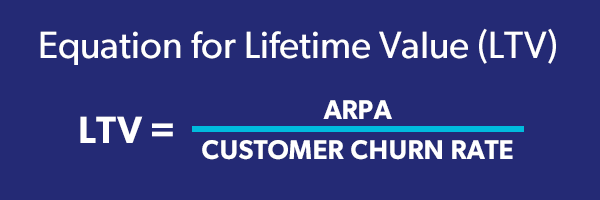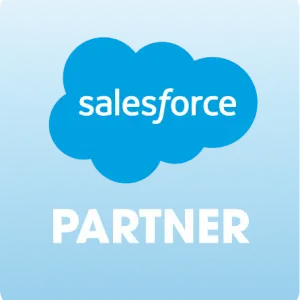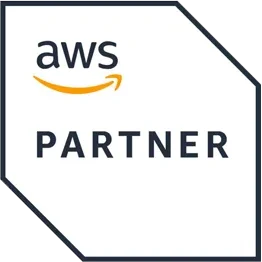SaaS Pricing and Packaging for Maximum Revenue
It’s an unprecedented time to be in SaaS. While experts agree that tech will continue to play a major role in business and the SaaS industry will continue to grow, there’s no question companies are feeling the crunch.
Growth isn’t as easy as it was a year ago. Your ability to invest resources to drive growth has changed as you’ve matured and as the economy constricts. In the past, you relied on innovating new products and features. But in a more conservative environment, innovation alone is too expensive to provide the return on investment you need to continue growing.
It’s time to employ another SaaS growth strategy: monetizing your existing product. You achieve monetization by offering innovative product packages with the features and components your customers will happily pay for.
Monetizing is the most effective growth lever for mature companies. A Price Intelligently report states: “In our study of 512 SaaS companies, we found out that monetization had the largest impact by far on your bottom line. This could mean targeting better customer channels or raising prices to better fit value.”
Price Intelligently’s study showed that monetization had a 12.7% impact on the bottom line — significantly better than two other common SaaS growth strategies: retention of customers (6.71%) or acquisition (3.32%).
Many companies aspire to achieve this agile pricing and packaging strategy. It should be simple enough:
- Start with your product
- Identify features that bring the most value to customers
- Adjust what comes in the package to encourage customers to dive deeper into your experience
- Make more money
But even if you get the green light for one packaging experiment — and get a winning result — doing this at scale is nearly impossible.
But even if you get the green light for one packaging experiment
— and get a winning result —
doing this at scale is nearly impossible.
To get it right, you’ll need constant packaging revisions and pricing innovation. But first, your business needs a foundation of systems and processes that allow for simple scalability and protected access.
Why Monetization Should be a SaaS Growth Strategy
Companies often prioritize developing new features over engineering new pricing and packaging solutions. When companies deliver new features without appropriate packaging plans, they’re missing out on sources of revenue. Tapping into what your customers want to pay for helps you create a value ecosystem. This means simultaneously giving your customers the most value from your product, while at the same time monetizing every component of your value effectively.
The focus on monetization is still relatively new, and company leaders worry that because of a lack of dedicated resources, making packaging and pricing changes will create technical debt.
But this doesn’t have to be the case. companies like Atlassian and HubSpot have shown that today’s infrastructure technology can make implementing a new SaaS pricing and packaging system cost-effective. Both companies offer pricing and packaging plans that allow users to select the most important features on a subscription model.
Because customers are getting great value out of the features they want and use, and not paying for a bunch of features they don’t want, they keep coming back year after year.
Packaging changes shouldn't require extensive development time.
Updates should be quick and painless.
But the key to being able to offer a variety of packages, and to consistently update those packages, is the back-end foundation they’ve built. It gives them the agility to make those updates quickly and painlessly. No technical debt. No tangled code. Just customers who’ll happily pay for the features they value.
Creating a Package-Based SaaS Pricing Strategy
How do you optimize SaaS pricing models for this monetization approach? It starts with identifying value metrics that align your product with what your customers want and what they’ll pay for.
Building an effective value metric requires continual updating and iterating to find the sweet spot that works for you and your customers.
The equation for finding lifetime value (LTV) uses the average revenue per account (ARPA) and churn rate:

So, if your ARPA is $50 and your churn rate is 10% per month, your LTV is $500.
Alignment of value between customer and company can change both these numbers. When customers upgrade, ARPU will increase. Churn will decrease as they upgrade. Only minor changes in each are needed to change LTV significantly.
Once you know which value metrics are essential to your customers, you can start experimenting with SaaS pricing models.
There are three ways to create a SaaS pricing and packaging foundation:
- The manual way without infrastructure is a slow approach, but it can be effective.
- The DIY method requires your team to dedicate time and resources to build their infrastructure.
- The collaborative approach, where your company brings in a partner to quickly create a scalable pricing and packaging infrastructure.
Let’s take a closer look at each approach.
The Manual Approach to SaaS Pricing Models
Suppose your company chooses to change its SaaS pricing and packaging manually. In that case, a product manager (PM) will spearhead the project with help from engineers.
This approach takes time. Spending nine to 12 months building initial pricing and packaging options is common. After that, developers re-engineer every pricing and package change through brute force. Leaders and employees may question if it’s worth investing precious time and resources. But debating pricing and packaging changes can eat up even more time.
You’ll have to go through this process whenever your business wants to evaluate SaaS pricing and packaging. In a rapidly evolving market, this means reevaluating multiple times a year.
Meanwhile, the market may shift, leaving your company and its SaaS growth strategy behind. The features your customers want may have shifted. And you’ll need to reevaluate your packaging options. What’s more, you’ll have to go through this process whenever your business wants to evaluate SaaS pricing and packaging. In a rapidly evolving market, this should mean reevaluating multiple times a year. Most companies don’t have the time or resources to devote to this lengthy, recurring chore.
Building an Infrastructure for SaaS Pricing and Packaging
If your business doesn’t want to go through a complicated manual engineering process every time it reevaluates SaaS pricing models, it needs an infrastructure that makes it easy to experiment. That means engineering a reusable, scalable, and decoupled infrastructure.
Engineering a reusable, scalable, and decoupled infrastructure will allow seamless pricing and packaging experimentation.
This approach involves three parts:
- A technical layer made up of a software development kit (SDK) or application planning interface (API) that knows how to respond to pricing and packaging changes and delegate the right plans to the right customers.
- A separate management console where employees with access can create new pricing and packaging plans and control which customers see their changes.
- A process that defines when and why pricing and packaging changes should be made.
Creating an infrastructure like this is valuable. The drawback is that you must build your infrastructure from scratch, which requires expertise and time. That’s where the third option comes in.
Partnering With a Team of SaaS Experts
If you don’t want to invest in building your infrastructure, you need to find a knowledgeable partner to help you do so. When choosing a partner, you must ensure they include some critical features in your infrastructure to allow seamless and scalable SaaS pricing and packaging changes:
- Your partner should have cloud tools that your growth team members can access.
- The management layer should seamlessly integrate into your company’s ecosystem and make it easy to test new features and bring them to market.
- To enable this reflection, the new product code should be able to speak to the management layer.
- Your new management layer must be role-based, ensuring only employees with permissions can make changes according to the pricing and packaging strategy processes in place at your company.
- Your new product code should be low-code, initially implemented by an engineer, and later require zero additional coding even when new packages are created.
- Your technicians must have control over which customers can see the changes they’re making as they test new packages.
- Your infrastructure should have a clear usage and activation layer, allowing you to use data as you experiment with pricing and packaging.
For many companies, tracking and granting access and managing multiple tiers without taking company time is the weak line in this process. Our entitlement management system tracks, administers, grants, and revokes access entitlements from one centralized interface. This makes the process of managing multiple pricing tiers possible and scalable without eating up large amounts of your company’s time.
The Start of Your SaaS Pricing and Packaging Monetization Journey
Monetization can keep you growing even when your SaaS company seems to have hit a wall.
But to turn monetization from a concept to a reality, your business needs a foundation of systems and processes that allow for simple scalability while protecting access.
Once you have a reliable infrastructure, you can create, test,
and roll out SaaS pricing and packaging solutions for years.
Once you have a reliable infrastructure, you can create, test, and roll out SaaS pricing and packaging solutions for years.
So ask yourself: Is your SaaS company maximizing revenue with existing customers? If the answer is no, it’s time to reconsider your SaaS growth strategy and start researching which partners can help you begin on the journey of monetization.
Thales has 30-plus years of working with software companies, evolving with the market, and helping customers reach new heights. Let us help you.



